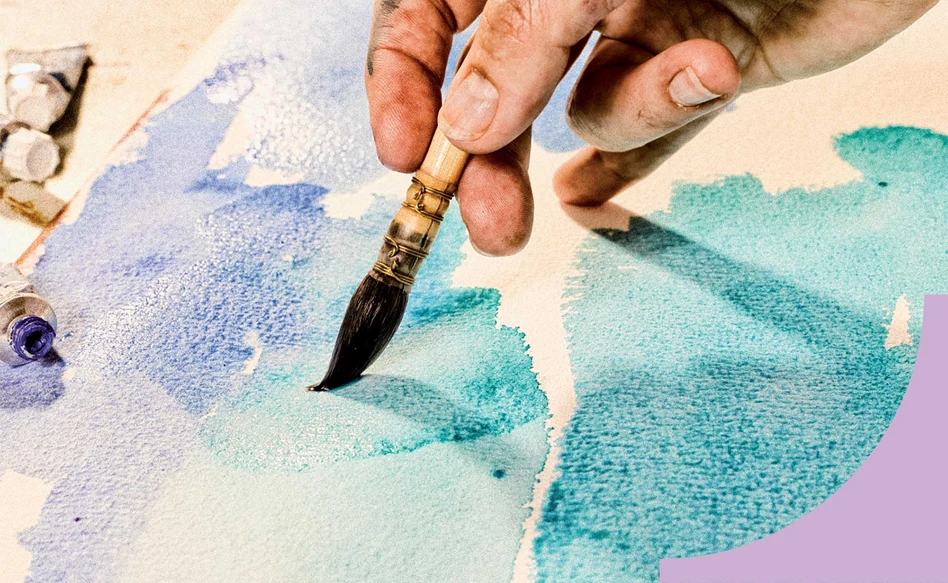
Difference in drying of water colour colours
The fact that some colours remain on the paper and can only be partially washed away is due to the type of pigment (particle size) and/or the quality of the paper used.
Paper
The surface gluing of the paper must be optimal so that the pigments remain on the adhesive layer. Talens Rembrandt water colour paper is optimally suited for this.
Pigment
During the production process of the paint, pigments are ground in the binder to a certain particle size that, for a top-quality water colour, is no more than 25 microns (1 micron = 1/1000 mm).
In addition to particles of this maximum size, there are also pigment particles that are smaller or even many times smaller. Extremely small particles predominate in some pigments.
These particles penetrate the paper and attach to the paper fibres, while larger particles tend to remain on the surface. That is why a colour that is based on a pigment with mainly small particles is more difficult to remove. Examples of strongly 'staining' colours are: Phthalo blue, Phthalo green, Quinacridone rose and Indanthrene blue.




